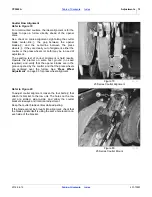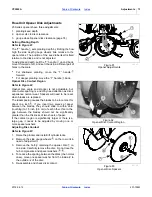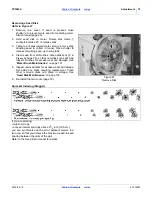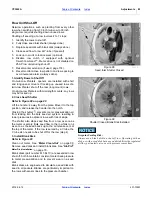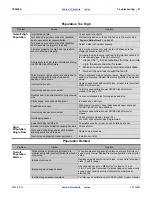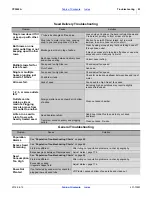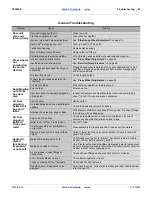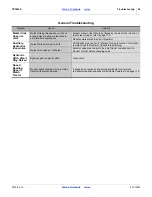
2019-06-12
401-705M
YP3025A
86
Troubleshooting
Planting Rate Problems
When starting up with a new planter, a new crop or a new
population it is important to physically double check what
the monitor is reporting in the cab by digging seeds. This
is to verify that you are set up correctly to plant the
desired population. Do not rely solely on the population
reported by the DICKEY-john® monitor.
Also during start up it is common to encounter alarms
and readouts on the DICKEY-john® console that don’t
seem to make sense. It is critical to troubleshoot these
alarms not only to make sure the planter drive is set
properly to hit the target population, but also to fix
incorrect entries in the DICKEY-john® monitor to
eliminate nuisance alarms.
Before entering the troubleshooting charts to remedy a
monitor or population problem, it is helpful to use the
following flowchart to get a handle on what may be
wrong. The basis for finding what is wrong comes from
knowing exactly what the planter is actually doing in the
soil. Always dig or observe seed on the ground when
checking populations.
1. Is the spacing on the
ground correct?
No:
Check the ground drive transmission and range sprocket selections, or the
population settings on a hydraulic drive unit. See also ““
”” in the troubleshooting charts.
Yes:
Go to step 2.
2. Is the reported population
3
/
8
the actual or is the
reported population too
high by a factor of 2?
No:
Yes:
An incorrect row spacing value entered in the seed monitor can cause
this. Example: 15 inches instead of 30 inches. Correct the row spacing
error on the DICKEY-john® console.
The system can also be off by a large factor if incorrect range sprockets
are installed. Check seed rate charts against range and transmission
sprockets on the planter.
3. Is the population on the
screen close to the target
population?
No:
Check seed rate charts against transmission sprockets selected. See
”” in the troubleshooting
charts.
Yes:
If slightly under, see ““
For seed monitor issues, see also the DICKEY-john®
Planter/Drill Control User Manuals,
“
TROUBLESHOOTING & ALARMS
” section.
Suggested Furrow Check:
Plant a short distance and dig seeds, or run with the
closing wheels wired up to leave an open seed trench.
Based on seeds found, determine an average distance
between seeds. Compare the distance between seeds
to the seed spacing listed in the charts for your
population. This is listed as “inches per seed”.

